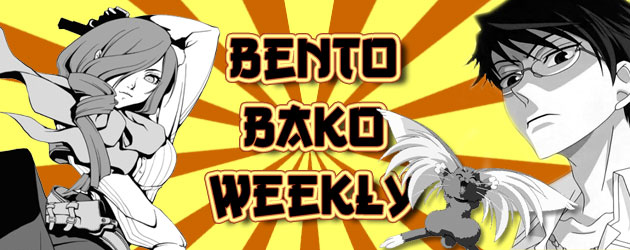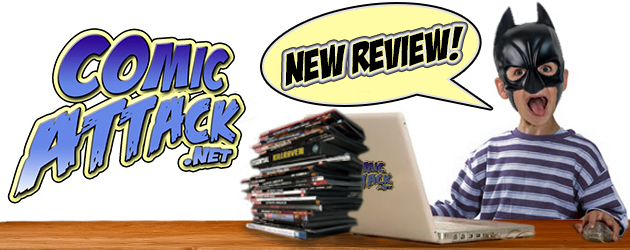 Title: All You Need is Kill
Title: All You Need is Kill
Author: Takeshi Obata (Bakuman.) (original story by Hiroshi Sakurazaka)
Publisher: Viz Media (Shonen Jump Advanced)
Volume: Volume 1 (of 2), $6.99 digital
Vintage: 2014 by Shueisha and Viz Media
Genre: Science fiction
For the graphic novel adaptation, click here. For the Edge of Tomorrow film review, click here.
And here we have yet another adaptation of Hiroshi Sakurazaka’s novel, marking the fourth version of this story that you can explore (the novel has also been released in America). Plenty of ways to enjoy this story of aliens and humans fighting over the Earth. Which has certainly been done over and over again, and I wouldn’t say this time around is especially unique in that regard. What does set this one apart is the experience of the story’s hero.
Massive alien creatures called Mimics have been rampaging over the Earth for years, and humanity is being slowly wiped out. The Mimics’ hard covering makes them difficult to penetrate with normal weapons, and their size and strength (and sheer numbers) have forced humanity to come up with new ways of doing battle. The United Defense Force has taken control of the war, with Japan taking a special role. To combat the Mimics, soldiers wear heavy armored suits called Battle Jackets, and only Japan is capable of producing them. Protecting that vital industry are the U.S. Special Forces, led by Rita Vrataski. Rita is a surprisingly young and small woman who is capable of wielding a massive battle ax, allowing her to decimate Mimics and lead the charge as the Full Metal Bitch. Meanwhile, fairly fresh recruit Keiji Kiriya is preparing for his first real battle against the Mimics. Or rather, he’s already fought them. And promptly died. Then woken up as if his death never occurred. It happens again. And again. Until Keiji realizes he’s not just dreaming, but actually living the same two days over and over again. Wake up. Special PT session. Spot Rita. Decline a party invitation to read his book. Sleep. Wake up. Fight the Mimics. Die. He learns that he doesn’t even have to die in the same way in order to wake up and do it all again. Of course, dying day after day isn’t exactly fun, so he vows to become stronger so he will survive and put an end to this agonizing loop of death. He learns he can change events, alter his own actions, and retain all of his own memories and training. He becomes stronger, faster, and eventually capable of fighting like Rita – without an auto-balancer to counter the heavy weight of his Battle Jacket, and wielding a massive battle ax. His progress eventually draws Rita’s attention, and she asks the winning question – “How many loops is this for you?”
If you’re looking for differences in the story, this one follows almost exactly along with the graphic novel adaptation. The movie is, of course, different. I haven’t managed to get through the novel yet. Speaking of the graphic novel version, that one confused me. I was never really 100% sure if it was just badly done, or because I’m more comfortable reading things in a manga format these days. That said, I find this version more acceptable. The flow and pacing are better. Then again, the GN was about 93 pages. The manga version puts the same story into two volumes running about 215 pages each. It makes a huge difference. It’s still not really a genre I enjoy (dark science fiction), but I definitely had a better time with this version than the GN. It’s handled much better, and it’s not as nonsensical. Now, I’m not certain if that’s because I’m more familiar with the premise now, but I do think the manga takes the time to properly lay things out. Again, it has a much higher page count in which to do that. Aside from any previous complaints about the story and premise in general, my problem with his particular version is the women. Rita…isn’t too bad. She could fit anywhere, really (though it’s hard to believe she’s strong enough to support her armor and wield her ax). But her mechanic, Shasta Raylle, looks to be about fifteen-years-old (and she actually might be), and her character design makes her look like she belongs in a harem series, not a science fiction story like this (and she definitely doesn’t look Native American). The curvy camp cook Rachel Kisaragi I don’t have a problem with. She looks and acts like an adult, though she’s mostly eye candy. Yet she’s clearly there to be a sort of big sister to everyone, and fits that role just fine. No complaints with the rest of the art, except for a panel or two where I swear Obata forgot to draw in an eye. I guess it just depends on what format you want to experience the story in, the version you’re most comfortable reading or watching. With four very different formats to choose from, it’s a rare opportunity to choose how you experience the story, or to view it from different angles.
Kris
kristin@comicattack.net
@girlg33k_kris


